Shavuot in LBI Collections
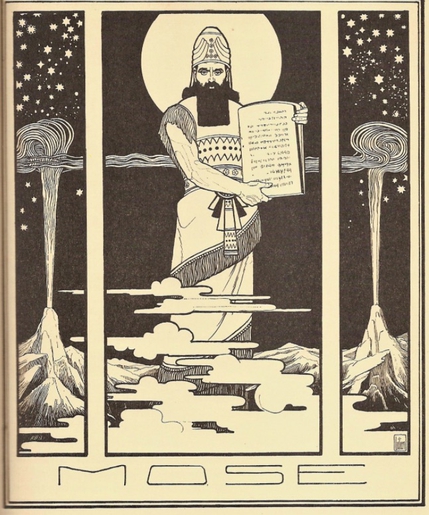
This illustration shows Moses descending the mountain with the Ten Commandments. This piece is especially interesting in that it shows the Zionist leader Theodor Herzl as Moses. Herzl had died a few years before, and was still remembered by many Jews as a "modern Moses." Indeed, Herzl became the model for numerous other illustrations of Moses by Lilien in this republishing of the Old Testament.
Learn more about Lilien's work here.
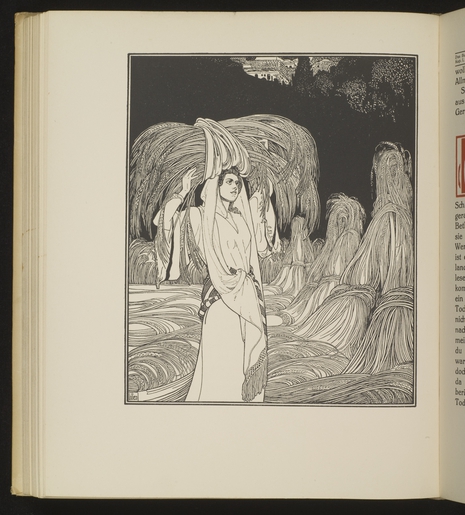
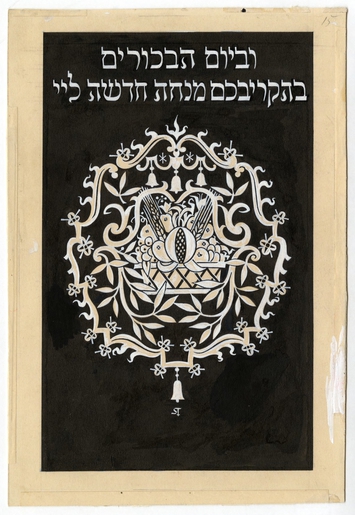
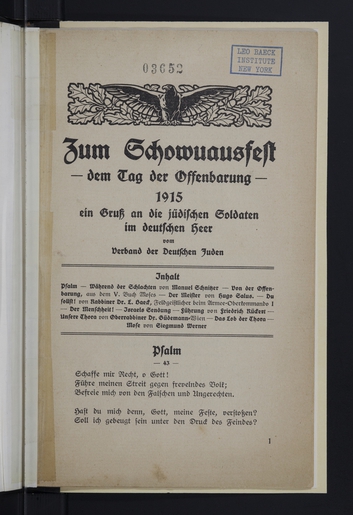
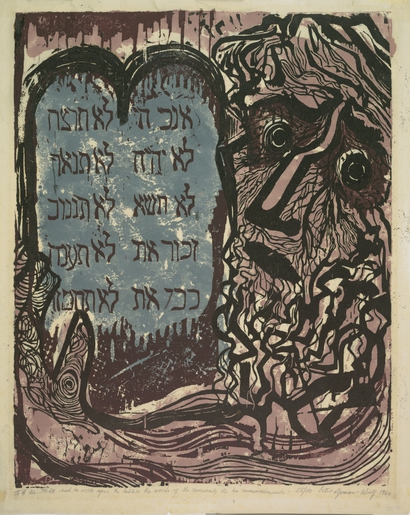
Shavuot commemorates two events–it celebrates the grain harvest in the ancient Kingdom of Israel and also commemorates the anniversary of the day when God gave the Torah to the people of Israel assembled at Mt. Sinai. The word Shavuot (or Shavuos) means “weeks,” and marks the completion of the seven-week Omer counting period between Passover and Shavuot. Shavuot also means “oaths,” for on this day God swore eternal devotion to the Jewish people, and in turn the Jews pledged everlasting loyalty to Him.
Shavuot was also the first day on which individuals could bring the Bikkurim (first fruits) to the Temple in Jerusalem for sacrifice. The Bikkurim were brought from the Seven Species for which the Land of Israel is praised: wheat, barley, grapes, figs, pomegranates, olives, and dates (Deuteronomy 8:8). For those who have visited us at the Center for Jewish History, you may remember the floor of the Great Hall, designed by the artist Michell Oka Donor, which depicts the first fruits.
A number of special customs surround the holiday.
Dairy foods are traditionally consumed on Shavuot. There are a number of explanations for this, among them that before they received the Torah, the Israelites were not obligated to follow its laws, which include shechita (ritual slaughter of animals) and kashrut. Since all their meat pots and dishes now had to be made kosher before use, they opted to eat dairy foods. However, there are also other possible reasons related to ancient rabbinical literature–for example, the Torah is compared to milk by King Solomon, who wrote: "Like honey and milk, it lies under your tongue" (Song of Songs 4:11). In Germany and Austria, cheesecake was a common dessert for the holiday, and one that is still customary among Jews in America today.
Another custom is the reading of the Book of Ruth during morning services, as King David—whose passing traditionally is thought to have occurred on this day—was a descendant of Ruth the Moabite. The story of Ruth is also connected to the grain harvest of ancient Israel.
The practice of staying up all Shavuot night to study Torah – known as Tiqun Leyl Shavuot (Hebrew: תקון ליל שבועות) – has its source in the Midrash, which relates that the night before the Torah was given, the Israelites retired early to be well-rested for the momentous day ahead. They overslept and Moses had to wake them up because God was already waiting on the mountaintop. To rectify this, a tradition started among some religious Jewish communities to stay up all night to study Talmud, Torah, and Midrash. Today, some Jewish organizations offer all night learning classes on a variety of Jewish subjects that people can choose to attend.
We hope you enjoy the images on this page, chosen for the holiday from the collections of the Leo Baeck Institute.